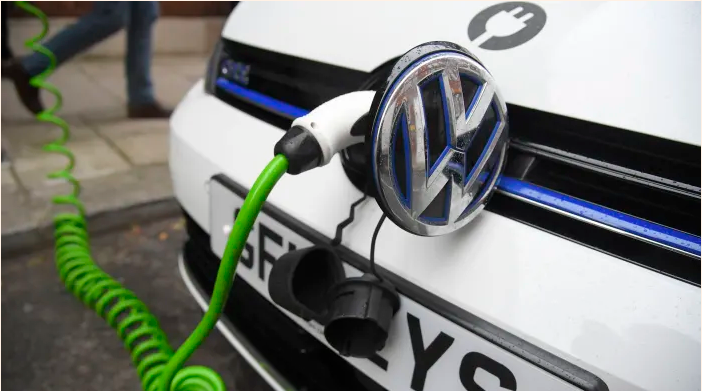
During the last century, cars fuelled by petrol or diesel became the dominant mode of transport throughout the world. As tightening environmental regulations force automakers to reduce tailpipe emissions, motor vehicles will be increasingly powered by electricity. But the road will not be a straight one. Advances in the capabilities of electric batteries are needed to improve on performance, convenience and affordability.
• What are the main battery types for electric vehicles?
Electric vehicles — or EVs — range from “mild hybrid” models that still rely in part on conventional internal combustion engines, through to cars with fully electrified power and transmission systems. The dominant battery technology is lithium-ion and the biggest manufacturers are based in Asia, including China’s CATL, Japan’s Panasonic and South Korea’s LG Chem. Inside the cell, positively charged lithium ions are carried by a liquid electrolyte from the anode to the cathode through a separator. This movement results in the discharge of an electrical current. The main variable for cost, life and performance is the cathode, of which there are varying “chemistries”. Among them lithium iron phosphate (LFP), which is used today in some e-buses in China as well as certain passenger cars. Another material, nickel manganese cobalt (NMC), has a higher energy density — a crucial measure of how much a battery can store. NMC-based batteries are more common in passenger cars and are expected to become the standard as they allow motorists to drive for longer on a single charge. Automakers using NMC cathodes include Kia, Hyundai, BMW and Mercedes-Benz. At present, it accounts for more than a quarter of global EV sales, according to Fitch Solutions, which forecasts its market share to surpass 60 per cent by 2027. “LFP is considered to be more stable, but the disadvantage is the energy density — that’s why gradually people are trying to move to NMC,” said Xiaoxi He, principal analyst at IDTechEx, a research company. In addition to use in full electric vehicles, NMC-based batteries are becoming increasingly common in low-voltage applications like 48-volt mild hybrids, where they assist a conventional engine but cannot drive the car independently.
• What are the limitations of EV batteries?
The two principal drawbacks to EVs are range, or the distance a car can go before it battery runs out, and recharging time. Therefore, a big focus is on increasing energy density. Yet battery cost remains arguably the biggest barrier to consumer adoption, despite them falling faster than expected: costs at the cell level have fallen from about $700 per kilowatt-hour (kWh) in 2009 to about $150 to $175 per kWh today, according to Boston Consulting Group. “While the costs are somewhat advantaged with NMC, frankly they’re still too high to be affordable,” says Craig Rigby, vice-president for technology at Clarios, a leading supplier of low-voltage electrification technology. It uses a form of NMC paired with graphite in 48-volt batteries for mild hybrids. “There’s some fundamental science that needs to happen to drive better performance and efficiency in the way the materials work,” he says. Manufacturers are attempting to reduce the cobalt content of lithium-ion cells, as the element is expensive and is often linked to child labour, by increasing the amount of nickel in their design. Tesla, which claims its Model 3 has the highest energy density cells of any EV, uses nickel cobalt aluminium (NCA) cells produced by Panasonic at the EV carmaker’s Gigafactory in the Nevada desert. It says this has significantly reduced the cobalt content. But a drawback for both NMC and NCA models is that they are prone to “thermal runaway”, where an overcharged battery can result in a fire, according to the Boston Consulting Group. Another obstacle to greater sales of fully electric vehicles is the paucity of charging infrastructure. Until equipment is more widely rolled out, hybrids retain an advantage.
• What developments are under way?
Solid state lithium technology is often called the “holy grail” for electric vehicles. Experts say it has the potential to deliver batteries that are safer, recharge faster and last longer. “They are safe because they’re more tolerant to temperature changes and also physical changes,” said Ms He at IDTechEx. Unlike liquid-based batteries, they can be small and divided into even smaller elements, making it much easier to integrate them into existing car designs. Toyota has laid out a timeline to release a solid state EV before 2025. French group Bolloré’s Bluecar uses solid-state batteries and Mercedes-Benz is equipping electric buses with the technology. But wider commercial take-up has been slow. Dyson, the appliances brand which is developing an EV, acquired a solid state start-up in 2015 but later wrote down its value and may not use the technology for the battery in its first model. “From the current progress in technology, we believe it still has long way to go to commercialise solid-state battery,” said a representative for CATL. Other technologies with promise include lithium air batteries, which saves weight by reacting the metal with oxygen drawn from the atmosphere, rather than ions in the cell casing. Lithium sulphur, which can be half the weight as lithium ion, carries a higher energy density and a potentially lower environmental impact because elements like cobalt and nickel are not used. Consumer need will continue to lead development. “Perhaps the most successful companies in the next few years will not be the ones with the highest power batteries, or the longest range vehicles, but those who can develop fast-charging solutions to mimic the ‘refuelling’ speed of combustion engine vehicles,” says Matthew Smith, partner and patent attorney at Mewburn Ellis.
Source: https://www.ft.com/content/fa6f2830-6a97-11e9-9ff9-8c855179f1c4
Comments are closed.






